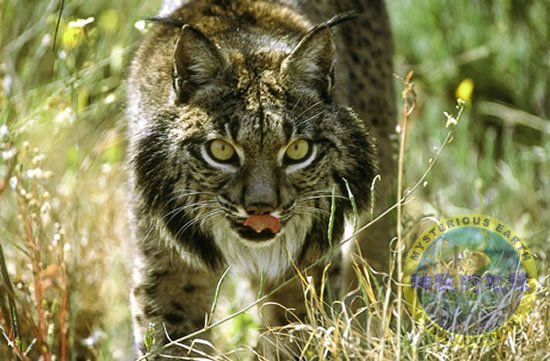World's Rarest Cat Species Boosted by Newfound Lynx
A female lynx in a captive-breeding program stalks Spain's Donñana National Park. Wild Iberian lynx number only about a hundred, but they have gotten a boost by the recent discovery of a previously unknown population.
The world's most endangered cat species may be slightly less endangered than previously thought.
A new population of Iberian lynx has been discovered in a remote area of Spain—raising the number of known populations from two to three—a conservation group reports.
The discovery increases the possibility that the heavily spotted cats can be rescued from the brink of extinction.
The newfound population appears to roam private estates in the Castile la Mancha Province of central Spain, according to the international conservation group WWF.
The two other known populations occupy isolated portions of Andalusia in southern Spain.
WWF announced the discovery on Tuesday after local newspapers corroborated evidence of the cats' existence. The animals have been caught on film.
"We are excited and amazed by this discovery," Luis Suárez, head of the organization's species program in Madrid, said in a statement.
Information on the discovery comes from the local government, Suárez said in a telephone interview. But the cats may have originally been seen by private landowners who wish to remain out of the spotlight.
Only between 100 and 150 Iberian lynx remain, including the new population, Suárez said. The World Conservation Union lists the species as "critically endangered," meaning it faces "an extremely high risk of extinction in the wild."
Rare Cats
Russia's Amur leopard and Japan's Iriomote cat have also been dubbed most endangered. But they are currently considered subspecies of leopards and leopard cats, respectively. This leaves the Iberian lynx, or Spanish lynx, with the dubious honor of being the most engangered cat species on Earth.
Pablo Ferreras is a researcher who studies the ecology of the Iberian lynx with the Instituto de Investigación en Recursos Cinegéticos (IREC) in Ciudad Real, Spain.
He said the genetic and ecological biodiversity of the endangered cat makes it unique and a top conservation priority.
"The loss of the Iberian lynx would mean the first loss of a felid species in the last 10,000 years," he said in an email.
Adult male Iberian lynx weigh up to 29 pounds (13 kilograms) and stand about 3 feet (1 meter) tall. Females are a few pounds lighter and a few inches shorter.
The cats have long legs, short tails, and beard-like fur around their faces. Tufts of black hair crowns their pointed ears.
Population Details
Preliminary reports suggest the Castile la Mancha population is isolated and genetically distinct from the Andalusia populations.
Such genetic diversity would be a boon to lynx conservation, Suárez noted.
One of the problems with isolation is that a sequestered population—lacking infusions of mating partners from other populations—begins to inbreed more often. Inbreeding leads to a weaker gene pool, resulting in populations that are more prone to birth defects and generally less able to bounce back from ailments.
"Having another [set of] genetic characteristics in another population will increase the possibility of survival," Suárez said. That's because it may enable researchers to increase the lynx's genetic diversity by crossbreeding animals from different populations.
Ferreras of IREC cautioned that the Castile la Mancha population may just be an extension of the Andújar population, which is the largest known Iberian lynx group and resides in northern Andalusia.
"It is very likely that some individuals disperse to southern Castilla-La Mancha [the region's Spanish name], where they can even settle down and breed," he said.
This would still be good news from a conservation perspective, he added. But a distinct breeding population would be better.
Lynx Threats
Conservationists have been fighting a losing battle with the Andalusia regional government to close a highway that splits Doñana National Park, home to one of the remaining lynx populations, for example. Each year several of the cats are killed on the road.
In addition, rabbits, lynx's primary prey, have declined by 80 percent over the last 50 years due to hunting and disease. Dam construction and agricultural development also take a toll, WWF said.
"Perhaps [Castile la Mancha] will be a region that will be more into the conservation in a more committed way," Suárez said.













